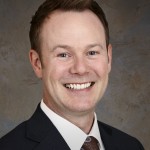
They were twice as likely to try to hurt themselves if they were prescribed more than recommended dose
By Brenda Goodman
HealthDay Reporter
MONDAY, April 28, 2014 (HealthDay News) — When prescribing antidepressants for teens and young adults, doctors should not start with high doses of the drugs because it might raise the risk of suicidal behavior, new research suggests.
The study, which was published online April 28 in the journal JAMA Internal Medicine, found that younger patients who began treatment with higher-than-recommended doses of antidepressants were more than twice as likely to try to harm themselves as those who were initially treated with the same drugs at lower, recommended doses.
“If I were a parent, I definitely wouldn’t want my child to start on a higher dose of these drugs,” said study author Dr. Matthew Miller, associate director of the Injury Control Research Center at the Harvard School of Public Health in Boston.
The research is likely to inform an ongoing debate in psychiatry — whether or not it’s safe to prescribe antidepressants to children and young adults.
In 2004, the U.S. Food and Drug Administration issued a public warning about the risk of suicide in kids and teens treated with a class of antidepressants called selective serotonin reuptake inhibitors (SSRIs).
The warning followed a government review that found youngsters who took the drugs were twice as likely to try to harm themselves as those who took inactive “placebo” pills. The agency expanded its black box warning on the drugs in 2007 to include adults younger than age 25.
More recent research has challenged the idea that antidepressants are dangerous for kids and young adults, however.
A review published in 2007 in the Journal of the American Medical Association concluded that the benefits of taking antidepressants outweighed the potential harms to teens and young adults.
Another study published in 2007 in the American Journal of Psychiatry showed that while youth prescriptions for SSRIs have dropped by 22 percent since the FDA’s black box warning, suicides in children and teens have increased. Some experts cite the finding as proof that the FDA’s warning was short-sighted and the drugs actually prevent youth suicides.
But no studies have looked at suicide risk by drug dosage, as the latest study did.
For the research, the study authors pulled information from a large prescription claims database. The study included more than 162,000 patients aged 10 to 64 with a diagnosis of depression who started taking an SSRI medication between 1998 and 2010.
Researchers restricted their analysis to three of the most commonly prescribed antidepressants, Celexa, Zoloft and Prozac. And they separated users into those who started at the recommended dosages of those medications, or those who were prescribed higher-than-recommended doses of the drugs.
The normal doses were 20 milligrams per day for Celexa, 50 milligrams per day for Zoloft and 20 milligrams per day for Prozac. Patients who were initially prescribed more than one drug were excluded from the study.
Nearly 18 percent of patients in the study were started on doses that were higher than those, in conflict with current medical guidelines.
Then researchers checked patients’ medical records to see how many had committed acts of deliberate self-harm within a year of starting their medications.
Among those younger than 24, patients on higher doses harmed themselves at roughly twice the rate of those on lower doses. During the study period, there were 32 incidents of self-harm for every 1,000 young patients taking high doses while there were only 15 such incidents per 1,000 patients taking recommended doses.
The researchers further estimated that doctors would see one additional case of self-injury for every 136 younger patients treated with higher-than-recommended doses of antidepressants. And the risk of suicide attempts seemed to be highest in the first 90 days on the medications.
The investigators found no significant increase in the risk of self-harm by drug dosage for people over the age of 25, however, suggesting the effect was age-dependent.
And there was no increase in suicide risk in kids and teens treated with recommended drug dosages.
The study was observational, which means that researchers can’t say for sure that drug dosage was the only thing that made young patients more likely to hurt themselves.
Dr. David Brent, who holds an endowed chair in suicide studies at the University of Pittsburgh, said he thinks there might also be something about the patients themselves that prompted doctors to start them on a higher dose in the first place.
“I am guessing that, assuming it was not just medical error, that there was something that the physicians were responding to — either greater severity or that the patient had had a history of needing higher doses to respond in the past,” said Brent, who wrote a commentary on the study, but was not involved in the research.
But the Harvard researchers don’t think that’s the case.
Miller said the team looked closely at the data to try to find differences that might explain why some patients were prescribed higher doses of the drugs.
Among the factors they considered were how recently patients were diagnosed with depression, where they were diagnosed as inpatients or outpatients, and whether they also had anxiety or a history of suicide attempts.
There were almost no differences between the patient groups, other than the dose of antidepressants they were initially prescribed, the study authors indicated.
The researchers even performed a statistical test to calculate the likelihood that there was some ghost factor they missed that might account for the differences. The test showed that was unlikely.
Brent agreed, adding that the research should encourage doctors to go low and slow with antidepressants in young patients, as clinical guidelines recommend, increasing the dose only as needed.
with questions or referrals.











